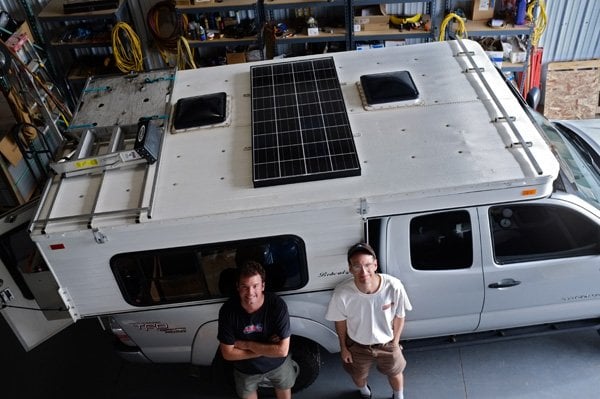Kodachrome
Senior Member
Hi gang,
I would post this in the ATC section since that is what I am running, but this side has good info too so I like to split it up a bit. Basically, I added 100 watts to my existing 85 watt panel on the roof in order to power a new AC/DC fridge which has been night and day better than the old 3-way. You can see that set up in this blog post.
Well I am so happy with this set up that I am replacing the 85 watt panel on the roof with a 180 watt so I am fool proof in winter / shady day excursions too at 280 watts. So with all that power, I got to thinking that two batteries would be a smart idea. I have a Sears Die Hard Group 31 that pretty much kicks butt and I also have my relatively new Optima Blue Top sitting in my storage now unused because you need to pair the darn things.
So what I want to do is use the Optima as a backup battery in that it only will get a charge from the truck 90% of the time and solar in a pinch, but not both. The same goes for the Sears. I want to be able to use both batteries in the following fashion: While I am driving the truck, the Optima is getting charged by the alternator while the Sears is getting charged by the single full time 180 watt panel on the roof, the 100 watt under cabover panel is stowed while driving. WIth a switch, I would like to be able to also make the choice of running the fridge while driving off of either the truck charge or solar. This way, while driving, the truck would most of the time only be charging the Optima and there would be less load taken from not running the fridge that could be used for charging phones, iPad's, Laptop and running a GPS. The fridge runs perfectly with just the solar, no alternator needed, not even on cloudy days.
This way, I can use the one heavy Group 31 battery as my primary and my much lighter Optima as the Aux. Having them on switchable load and charge modes would in my mind, eliminate the need to have two of the same kind and date of battery and make replacing them far cheaper since there would not be two to deal with at once.
So what do I have to do here in order to get this going? Do I need a second battery separator? What kind of switches, fusing if any?
I would post this in the ATC section since that is what I am running, but this side has good info too so I like to split it up a bit. Basically, I added 100 watts to my existing 85 watt panel on the roof in order to power a new AC/DC fridge which has been night and day better than the old 3-way. You can see that set up in this blog post.
Well I am so happy with this set up that I am replacing the 85 watt panel on the roof with a 180 watt so I am fool proof in winter / shady day excursions too at 280 watts. So with all that power, I got to thinking that two batteries would be a smart idea. I have a Sears Die Hard Group 31 that pretty much kicks butt and I also have my relatively new Optima Blue Top sitting in my storage now unused because you need to pair the darn things.
So what I want to do is use the Optima as a backup battery in that it only will get a charge from the truck 90% of the time and solar in a pinch, but not both. The same goes for the Sears. I want to be able to use both batteries in the following fashion: While I am driving the truck, the Optima is getting charged by the alternator while the Sears is getting charged by the single full time 180 watt panel on the roof, the 100 watt under cabover panel is stowed while driving. WIth a switch, I would like to be able to also make the choice of running the fridge while driving off of either the truck charge or solar. This way, while driving, the truck would most of the time only be charging the Optima and there would be less load taken from not running the fridge that could be used for charging phones, iPad's, Laptop and running a GPS. The fridge runs perfectly with just the solar, no alternator needed, not even on cloudy days.
This way, I can use the one heavy Group 31 battery as my primary and my much lighter Optima as the Aux. Having them on switchable load and charge modes would in my mind, eliminate the need to have two of the same kind and date of battery and make replacing them far cheaper since there would not be two to deal with at once.
So what do I have to do here in order to get this going? Do I need a second battery separator? What kind of switches, fusing if any?

